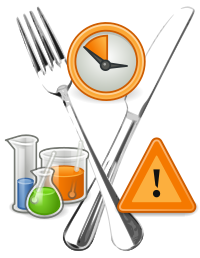
Chemical characterization of 21 species of marine macroalgae common in Norwegian waters: benefits of and limitations to their potential use in food and feed
Sign Up to like & getrecommendations! Published in 2018 at "Journal of the Science of Food and Agriculture"
DOI: 10.1002/jsfa.8798
Abstract: Abstract BACKGROUND In the past few years, much effort has been invested into developing a new blue economy based on harvesting, cultivating and processing marine macroalgae in Norway. Macroalgae have high potential for a wide… read more here.
Keywords: food feed; food; marine macroalgae; norwegian waters ... See more keywords

Investigation of Antibacterial Activity and Probiotic Properties of Strains Belonging to Lactobacillus and Bifidobacterium Genera for Their Potential Application in Functional Food and Feed Products
Sign Up to like & getrecommendations! Published in 2021 at "Probiotics and Antimicrobial Proteins"
DOI: 10.1007/s12602-021-09777-5
Abstract: For novel food/feed product formulation, the selection of the right culture with probiotic properties is essential. The purpose of this research was to evaluate antibacterial activity and probiotic features of Lactobacillus and Bifidobacterium spp. for… read more here.
Keywords: bifidobacterium; food feed; probiotic properties; functional food ... See more keywords

Occurence of legacy and novel brominated flame retardants in food and feed in France for the period 2014 to 2016.
Sign Up to like & getrecommendations! Published in 2018 at "Chemosphere"
DOI: 10.1016/j.chemosphere.2018.05.122
Abstract: Determination of the occurrence levels of legacy and novel BFRs is today required to better understand the trends of BFRs contamination in food consecutive to the EU PBDEs restrictions and to proceed to a recent… read more here.
Keywords: 2014 2016; food feed; legacy novel; food ... See more keywords

Antimicrobials for food and feed; a bacteriocin perspective.
Sign Up to like & getrecommendations! Published in 2020 at "Current opinion in biotechnology"
DOI: 10.1016/j.copbio.2019.12.023
Abstract: Bacteriocins are natural antimicrobials that have been consumed via fermented foods for millennia and have been the focus of renewed efforts to identify novel bacteriocins, and their producing microorganisms, for use as food biopreservatives and… read more here.
Keywords: antimicrobials food; food feed; feed bacteriocin; feed ... See more keywords

Current status of major mycotoxins contamination in food and feed in Africa
Sign Up to like & getrecommendations! Published in 2020 at "Food Control"
DOI: 10.1016/j.foodcont.2019.106975
Abstract: Abstract Mycotoxins are toxic secondary metabolites produced by fungi belongs to the genera Aspergillus, Fusarium and Penicillium that are capable of contaminating different types of food and feed. Mycotoxins can cause serious health complications to… read more here.
Keywords: food feed; current status; contamination; mycotoxins contamination ... See more keywords

The Deoxynivalenol Challenge.
Sign Up to like & getrecommendations! Published in 2022 at "Journal of agricultural and food chemistry"
DOI: 10.1021/acs.jafc.2c03690
Abstract: This perspective examines four of the primary challenges that the mycotoxin deoxynivalenol (DON) presents to farmers, producers, and consumers. DON is one of the big five agriculturally important mycotoxins, resulting from Fusarium infection on grains,… read more here.
Keywords: food; chemistry; food feed; challenge ... See more keywords

Paper-Based Microfluidic Device (DON-Chip) for Rapid and Low-Cost Deoxynivalenol Quantification in Food, Feed, and Feed Ingredients.
Sign Up to like & getrecommendations! Published in 2019 at "ACS sensors"
DOI: 10.1021/acssensors.9b01895
Abstract: Mycotoxin contamination causes over $5 billion of economic loss per year in the North American food and feed industry. A rapid, low-cost, portable, and reliable method for on-site detection of deoxynivalenol (DON), a representative mycotoxin… read more here.
Keywords: feed ingredients; food feed; feed feed; feed ... See more keywords

Limits to the world’s green water resources for food, feed, fiber, timber, and bioenergy
Sign Up to like & getrecommendations! Published in 2019 at "Proceedings of the National Academy of Sciences of the United States of America"
DOI: 10.1073/pnas.1817380116
Abstract: Significance Precipitation over land partitions into runoff via surface water and groundwater (blue water) and evapotranspiration (green water). We expand the traditional debate on water scarcity, which solely focuses on blue water, by assessing green… read more here.
Keywords: water scarcity; water; food feed; green water ... See more keywords

Mycotoxins in food and feed: toxicity, preventive challenges, and advanced detection techniques for associated diseases.
Sign Up to like & getrecommendations! Published in 2022 at "Critical reviews in food science and nutrition"
DOI: 10.1080/10408398.2022.2059650
Abstract: Mycotoxins are produced primarily as secondary fungal metabolites. Mycotoxins are toxic in nature and naturally produced by various species of fungi, which usually contaminate food and feed ingredients. The growth of these harmful fungi depends… read more here.
Keywords: health; food; mycotoxin; toxicity ... See more keywords

Integrated policy analysis to identify transformation paths to more sustainable legume-based food and feed value-chains in Europe
Sign Up to like & getrecommendations! Published in 2021 at "Agroecology and Sustainable Food Systems"
DOI: 10.1080/21683565.2021.1884165
Abstract: ABSTRACT The food- and feed-value systems in the European Union are not protein self-sufficient. Despite their potential to improve the well-being of arable cropping systems, sufficient production of high-protein legume grains in Europe has not… read more here.
Keywords: legume based; legume; food feed; feed value ... See more keywords

Insufficient risk assessment of herbicide-tolerant genetically engineered soybeans intended for import into the EU
Sign Up to like & getrecommendations! Published in 2019 at "Environmental Sciences Europe"
DOI: 10.1186/s12302-019-0274-1
Abstract: The introduction of herbicide-tolerant (HT) genetically engineered (GE) soybeans has raised new challenges for the European risk assessment of imported food and feed. Food and feed products derived from these plants may show specific patterns… read more here.
Keywords: assessment; risk assessment; food feed; herbicide ... See more keywords